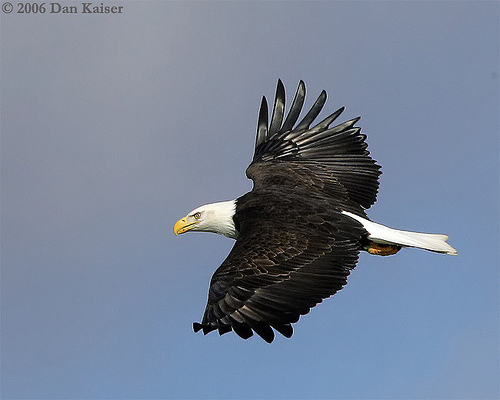
What about interactions?
The whooping crane interacts with many other organisms other than their own species. Some of these include predators (such as the bald eagle, gray wolf, lynx), prey (go back to my Nutrition page for this information here), and parasites and bacteria that cause botulism, cholera and avian tuberculosis. Humans also have interactions with these beautiful cranes, both positively and sadly negatively.
 Predators
of the whooping crane includes: black bears, wolverines, gray
wolves, red foxes, lynxes, bald eagles and the common raven.
Predation on eggs and juveniles is more common than in adults simply
because of the small size. Although the above list of predators is a
decent size, none of the above species pose serious threats to the
eggs and juveniles. A reason for this may be because of the small
distance that is kept between the young and adults while they are
growing up. For more information about the
bald eagle and
gray wolf predators, click their names!
Predators
of the whooping crane includes: black bears, wolverines, gray
wolves, red foxes, lynxes, bald eagles and the common raven.
Predation on eggs and juveniles is more common than in adults simply
because of the small size. Although the above list of predators is a
decent size, none of the above species pose serious threats to the
eggs and juveniles. A reason for this may be because of the small
distance that is kept between the young and adults while they are
growing up. For more information about the
bald eagle and
gray wolf predators, click their names!
Parasites and bacteria that cause diseases are a threat because of the whooping cranes small populations. However, over around a 40-year length of time, people found 13 cranes that died during migration. The causes of death? One may have had a heart-muscle disease and one may have had a viral infection. The other 11 cranes had this fate: five hit power lines, four suffered from gunshot injures or collisions, one was shot, and the other died in a muskrat trap. As you can conclude from this information, predators and parasites have little effect on the population of the whooping cranes. The species that is causing the most population issues are us humans! To learn more about the interactions humans have had with the whooping cranes, visit my Conservation page here.
Return home if you'd like to start over.